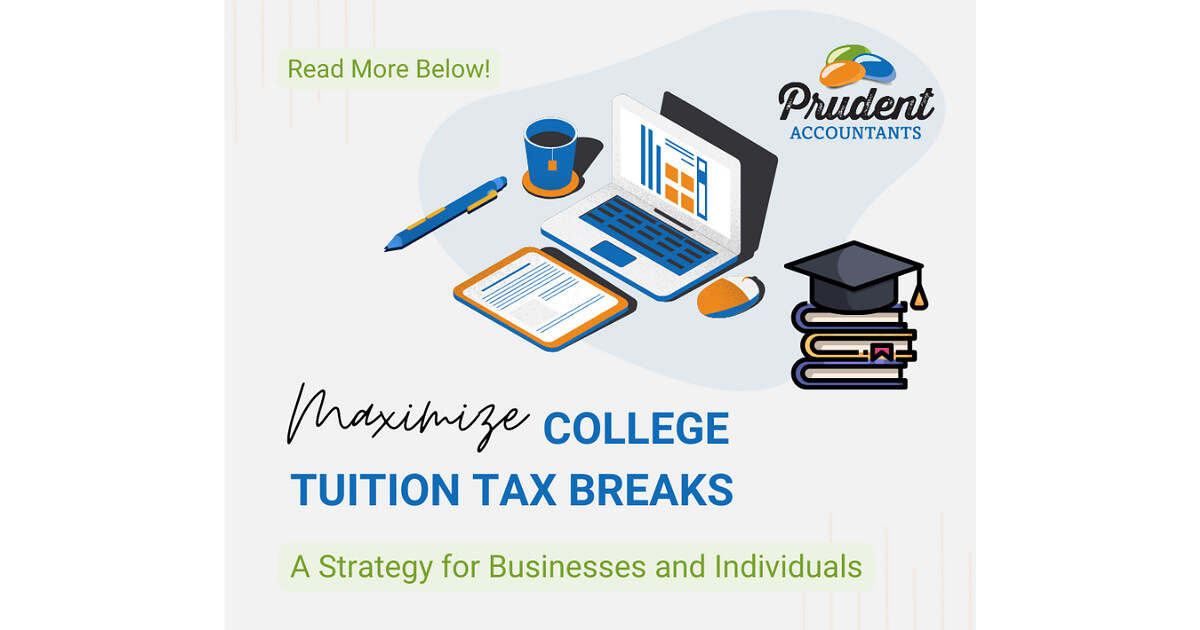How Business Owners Can Turn College Expenses Into Tax Savings

For families with college-aged children, tuition can feel like a never-ending expense. But what if that cost could actually reduce your tax bill? If you’re a business owner with a student in college, there’s a powerful and often-overlooked tax strategy that can save your family thousands of dollars each year.
This approach blends personal tax planning with business strategy to create significant, recurring tax benefits—and it’s all completely legal and IRS-compliant when implemented correctly.
The Core Strategy
This tax strategy involves two main components:
- Having your college-aged child file their own independent tax return, rather than being claimed as a dependent.
- Employing your child through your business, paying them reasonable wages for legitimate work.
This structure can unlock valuable tax credits for the student and deductions for the business, turning education expenses into smart tax savings.
Why Independent Filing Matters
Parents often claim college students as dependents. However, for high-income families, doing so may actually cause them to miss out on lucrative education credits like the American Opportunity Tax Credit (AOTC), which is worth up to $2,500 annually.
If the student instead files independently—and provides more than half of their own support—they may become eligible to claim this credit on their own return, even if the parents are phased out due to income limits.
To qualify:
- The student must be enrolled at least half-time at a qualified institution.
- Their adjusted gross income must fall within credit thresholds.
- They must show they’re covering over 50% of their own expenses (which can include income, scholarships, and certain types of financial aid).
How Business Owners Can Maximize the Benefits
For business owners, employing a college-aged child introduces a powerful advantage. By paying your child a reasonable wage for real work in your business:
- The business receives a deduction for the wages paid.
- The student earns income that may be taxed at a lower rate—or not at all, depending on the amount.
- That income helps the student meet the self-support threshold needed for independent filing.
- You can potentially offer up to $5,250 per year in tax-free educational assistance through a Section 127 plan.
Real-World Scenario: The Case of Jordan
Jordan is a college student with $25,000 in annual education expenses and earns $10,000 from a part-time job.
Jordan’s parents own a business and decide to pay Jordan $12,550 for legitimate work performed during the year. They also implement a Section 127 plan to offer $5,250 in tax-free educational assistance.
Here’s what that looks like in numbers:
- The parents save $3,012 in taxes from the wage deduction (at a 24% tax rate).
- Jordan qualifies to claim the full $2,500 AOTC.
- The $5,250 education assistance is tax-free.
Total family tax benefit: $10,762 in one year.
And this can be repeated annually throughout the student’s college career.
Other Tax-Advantaged Tools to Consider
To get the most from this strategy, consider combining it with other education funding tools:
529 Plans and Coverdell ESAs
These tax-advantaged savings plans allow for tax-free withdrawals when used for qualified education expenses. Proper coordination ensures you don’t miss out on other benefits like the AOTC.
ROTH IRAs
If your student has earned income, they can contribute up to $6,500 per year (2024 limit). Contributions grow tax-free, and early withdrawals for education expenses can be penalty-free.
Key Compliance Considerations
As with any tax strategy, documentation and compliance are essential:
- Students must actually perform work to justify wages. Keep logs and document job responsibilities.
- Payments must be reasonable and consistent with market wages.
- The student must not be claimed as a dependent if filing independently.
- Track all relevant forms: W-2s, 1098-T (tuition), 1099-Q (529 distributions), etc.
- Review the plan annually based on changes to income, expenses, or school status.
Business Owner Checklist
If you’re a business owner and want to implement this strategy, here’s a streamlined approach:
- Assess the family’s income and student support structure.
- Evaluate whether the student qualifies to file independently.
- Set up proper payroll for the student within the business.
- Determine eligibility for education credits and confirm compliance.
- Consider implementing a Section 127 plan.
- Coordinate with ROTH IRAs and 529 plans for optimal results.
- Collect all necessary documentation and ensure accurate tax filings.
Is This Right for You?
This strategy is most effective for:
- Business owners with college-aged children.
- Families who are phased out of education credits.
- Students who are working part-time or supporting themselves through work or aid.
- Parents looking to create tax-efficient education funding plans.
The Bottom Line
College tuition will always be a major expense—but with the right planning, it doesn’t have to be a tax burden. When business owners strategically support their college-aged children through employment and independent filing, they open the door to thousands in tax savings each year.
This approach takes some coordination, but the return on investment can be significant. As always, consult with a qualified tax advisor to ensure your strategy is correctly implemented and fully compliant.
Ready to explore how this strategy can work for your family and your business?
Now’s the time to plan before the year-end deadline.








